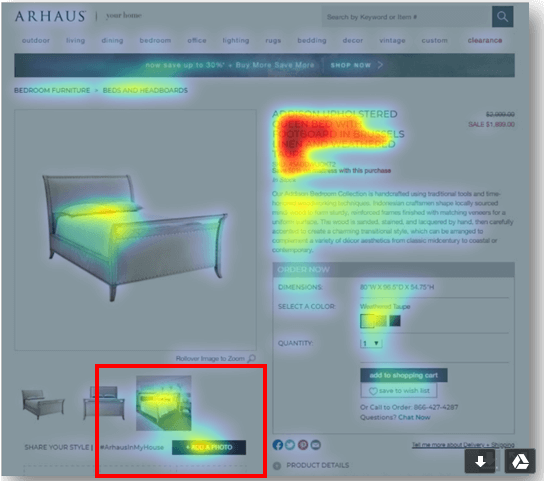 Any savvy search engine optimization specialist (SEO) knows website optimization never truly ends. Just when you think you’ve done it all, Google decides to update their algorithm or roll out new organic (and paid) features to keep you on your toes. Plus, your website is changing all the time, too, and for this reason, small tweaks are necessary for fine-tuning your SEO strategy and staying one step ahead of the competition.
Any savvy search engine optimization specialist (SEO) knows website optimization never truly ends. Just when you think you’ve done it all, Google decides to update their algorithm or roll out new organic (and paid) features to keep you on your toes. Plus, your website is changing all the time, too, and for this reason, small tweaks are necessary for fine-tuning your SEO strategy and staying one step ahead of the competition.
Sometimes small tweaks seem intuitive, like increasing the prominence of the “Add to cart” button on a product page or moving a copy-heavy header below the fold so as not to overwhelm the user. You’ve probably encountered these types of sticky situations where a change seems beneficial, but it’s nearly impossible to quantify the impact without any data. This is where conversion rate optimization (CRO) comes into play.
SEO or CRO? Who’s on first?
Search engine optimization and conversion rate optimization is something of a chicken-and-egg scenario in the sense that it’s hard to determine which to prioritize.
- Should you focus on driving traffic to your site through organic, and then optimize for conversions?
- Or should you create a frictionless conversion path before perfecting your top-of-funnel strategy?
Depending on how aggressive you want to be with your CRO efforts, some tools actually require a minimum visitor threshold to ensure your A/B tests and other methods of data collection can reach what’s called statistical significance. For this reason, it makes sense to use your marketing budget for SEO first, since the quality of your website will have a direct impact on your other channels as well.
A direct example of this is your quality score, which includes landing page quality and click-through rate (CTR). This plays a major role in determining your cost per click (CPC).
While optimizing for conversion ratio (CVR) alone will not drive more traffic, but it will help to reduce friction and alleviate pain points for the user, which can equate to more revenue. Even some of the most visually stunning websites with top-notch products can fail to reach their true potential because of something as simple as a cumbersome checkout process.
CRO Tools to boost SEO
The following tools can be used by conversion experts and SEOs alike who are looking to ramp up their leads and extend their reach. Here are four savvy CRO tools to help you boost your SEO efforts.
#1 – Hotjar
Capabilities: Features multiple analysis tools such as visual heatmaps, visitor recordings, conversion funnel tracking, form analytics, polling, surveys and more.
Time to collect data: Varies.
What you might not know about this tool: Hotjar is one of the only tools on the market that allows you to fully customize your data collection. Most tools constantly collect data from all pages and visitors but Hotjar is different in the sense it allows you to control the amount of data collected and enables you to generate reports on the fly.
This tool also uses smart sampling techniques. For example, if your site gets 75,000 visitors per day, but your Hotjar plan only allows for 25,000 to be recorded, the tool’s algorithm will collect data from one out of three visitors over the course of a day to ensure there is an even distribution. You can also change the sampling rate to suit your preferences.
How it applies to SEO: Analyze heatmaps by device type to identify hot and cold spots and get precise click data to see which elements receive the most interaction. You can also measure how below-the-fold content performs and get an idea of how many people actually make it to the bottom of your landing page (hint: it’s less than you think).
Want to see how a real user interacts with your site? Set up visitor recordings which you can use to play back a user’s journey through the site. You can also create surveys and polls to ask users for direct feedback on their experience. This can be especially useful if you’re redesigning a landing page.

#2 – EyeQuant
Capabilities: A predictive heat-mapping tool which allows you to analyze the design metrics of your web page, view a perception map to identify the most eye-catching features, highlight “hotspots,” regions of interest and more.
Time to collect data: Instantaneous! The algorithm behind this tool draws on thousands of statistically significant eye-mapping studies and uses machine learning to pinpoint which elements of a web page earn the most attention.
What you might not know about this tool: EyeQuant is currently working on a display component that can help marketers better understand how to improve their online banner ads. This Ad Visibility Score, as it’s called, “analyzes the visual characteristics of an ad from simple features like colors and contrasts, to more complex factors like object recognition.”
While EyeQuant will be able to score your ad from 1 to 100 (1 being poor and 100 being optimal), the company is still drilling down into the data in order to determine precisely what factors make certain ads perform better.
How it applies to SEO: The most useful feature is the Attention Map, which allows you to see which areas of your landing page are commanding the most eyeballs. This tool also makes it easy to identify focal points on a page in order to help you tweak your design recommendations.
Want to make sure your promotional pricing is front and center? Use the Perception Map feature, which highlights elements that users are most likely to notice within the first 3 seconds of visiting your page. You can also segment the data to show how a new versus a returning user would view your content.
Unlike most heat-mapping tools which rely on collecting user data, EyeQuant allows you to upload screen shots of your landing pages and get feedback with the click of a button. This means that you can assess your landing pages as soon as you build them in the staging environment and make iterations before the page ever goes live. Note: This tool can only be used for above-the-fold content. It’s recommended that you upload a screen shot rather than enter the URL. This is particularly important if you have any pop-up overlays.

#3 – Crazy Egg
Capabilities: This tool lets you see what is hot or not using perception heatmaps, scroll-analysis, customer journey mapping, in-depth page analysis featuring click behavior, and it also allows for A/B testing.
Time to collect data: Varies
What you might not know about this tool: Crazy Egg allows for custom user tracking, which enables you to get ultra-granular with your data segmentation.
For example, you can track behavior from visitors who have logged in versus those who aren’t logged in, segment users based on their previous click history, or employ custom JavaScript to categorize users however you like!
How it applies to SEO: Crazy Egg offers A/B testing without the need to commit to additional expensive software. The tool also offers a deeper look into click behavior, which EyeQuant lacks.
The “confetti map” allows you to segment clicks by referral source, device type, time of day, day of the week, keyword, search engine, custom variables and more.

#4 – Optimizely
Capabilities: Optimizely is one of the most robust A/B, multivariate and multipage testing platforms. If you have a paid subscription, you’re probably already well-versed in CRO. Use it to create custom experiments and tests without the need to code (however, you can code your own tests). It gives you full control over things like traffic allocations, custom segments and audiences and more.
Time to collect data: Varies
How it applies to SEO: Analyze your web page and see if there are any elements which may lend themselves well to an A/B test. With Optimizely, you can simultaneously test two versions of the same content without having to worry about getting dinged for cloaking. This tool runs its tests until they reach statistical significance, so you can always ensure your variation was the reason for improvement and not the result of a normal fluctuation in conversion rates.
By leveraging these CRO tools, you can use real data to back up your ideas for making design changes to your site. If you are driving a significant amount of traffic to your site, it may be time to start optimizing for CRO.
Contributing authors are invited to create content for Search Engine Land and are chosen for their expertise and contribution to the search community. Our contributors work under the oversight of the editorial staff and contributions are checked for quality and relevance to our readers. The opinions they express are their own.



